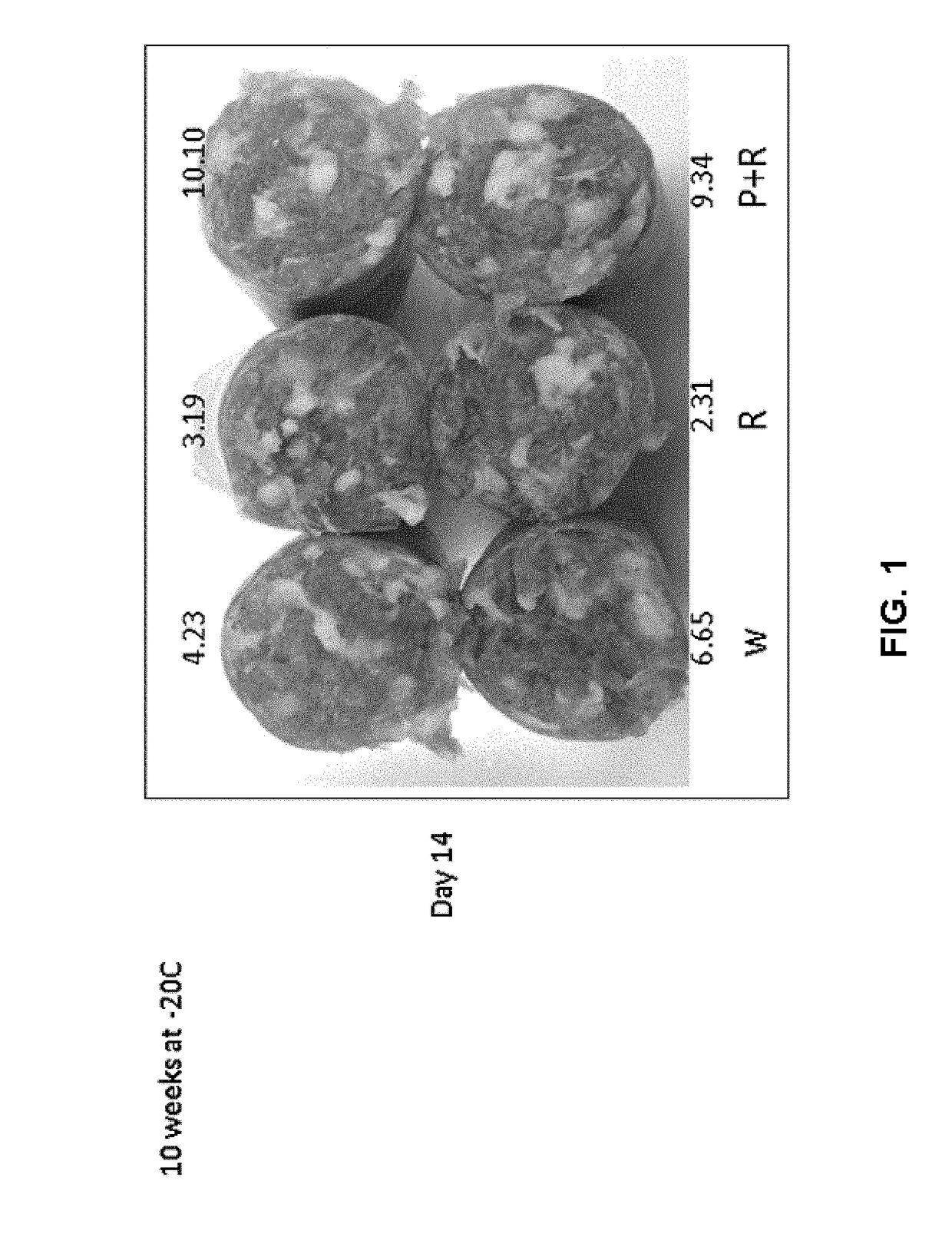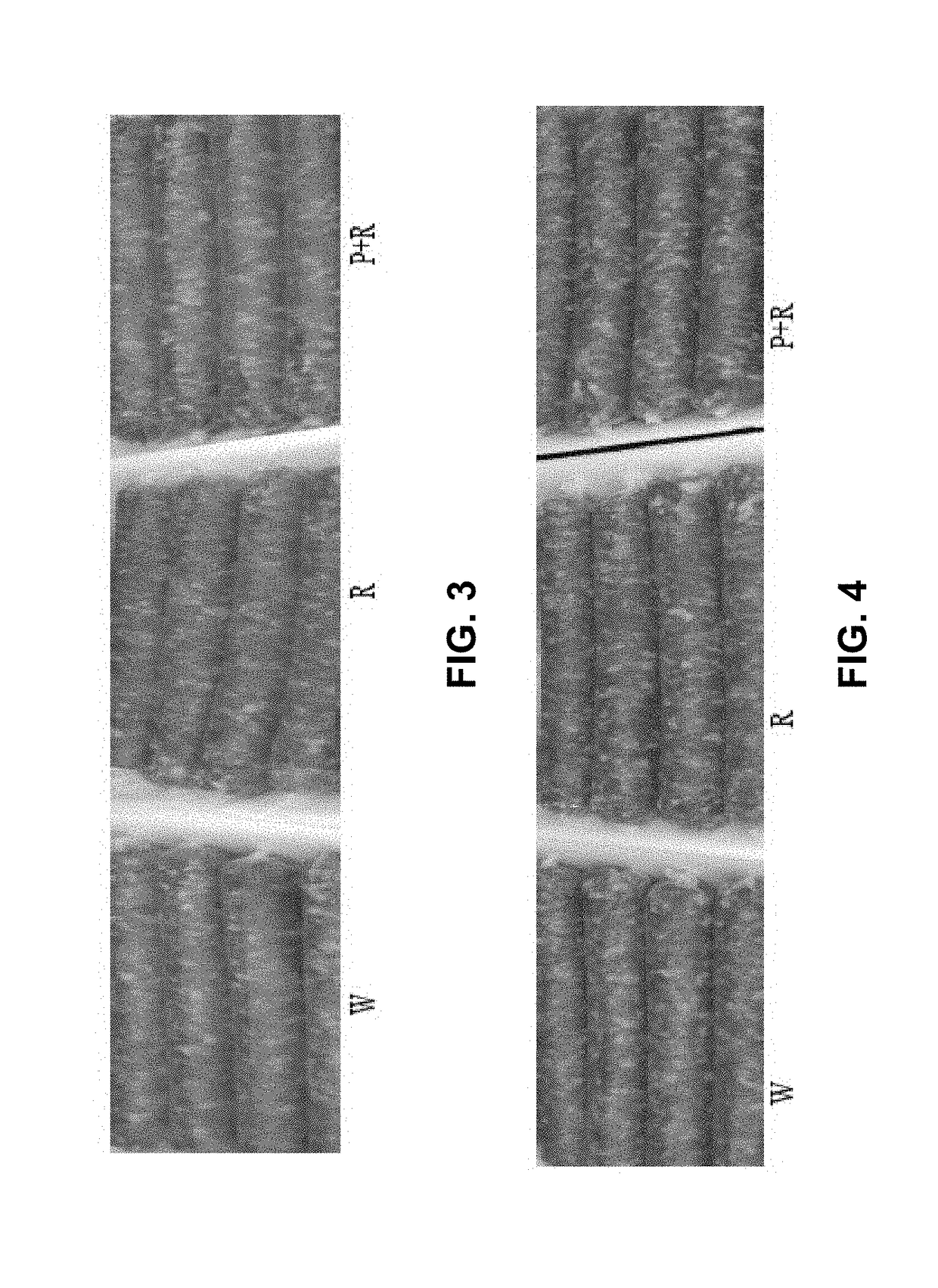Rosemary/phospholipase compositions and methods of preserving muscle tissue
a technology of phospholipase and composition, applied in the field of rosemary/phospholipase composition and composition of muscle tissue preservation, can solve the problems of stale and rancid odors/flavors that are undesirable, food preservation is a complicated process, and the formation of stale and rancid odors/flavors is a major obstacle to consumer acceptance, so as to achieve the effect of improving the storage li
- Summary
- Abstract
- Description
- Claims
- Application Information
AI Technical Summary
Benefits of technology
Problems solved by technology
Method used
Image
Examples
example 1
Materials and Methods
[0099]The pancreas extract containing primarily phospholipase A2 is assessed for protein content and enzyme activity. In some cases, the extract is concentrated to a standardized protein content and enzyme activity. A typical composition is 10 mg protein / ml and 100 U / mg protein. The aqueous solution is then added to the food product to a desired final concentration and activity (e.g., 1 mg / kg meat, 125 U / kg meat). The aqueous extract can be dried if desired prior to addition to the food product. The commercially available rosemary extract is incorporated into the food product according to suggestions by the manufacturer. Concentrations below the recommended levels are examined due to the synergy with phospholipase A2 in the pancreas or bacterial extract.
example 2
Results
[0100]The inventors have shown that 200 ppm rosemary alone accelerated discoloration in pork sausage compared to no added antioxidant. Addition of phospholipase A2 in a pancreas extract (PE) at 126 Units of PLA2 activity / kg pork sausage (1 ppm) did not accelerate nor decrease the onset of discoloration. However, the combination of 200 ppm rosemary and PE (R+P) stabilized color better than rosemary alone (R) as well as the no antioxidant treatment (W) (FIGS. 1-4). These results indicate an unexpected synergy that is considered patentable. Current technology uses synthetic antioxidants to stabilize pork sausage. Consumers want meat products that do not contain synthetic antioxidants. The inventors have discovered a unique “natural” combination of rosemary extract and pancreas extract that improves color stability during light display.
[0101]The inventors have shown that Rosemary+PE at 126 Units of PLA2 activity / kg MST (1 ppm) improved color stability in ground turkey while: i) P...
PUM
 Login to View More
Login to View More Abstract
Description
Claims
Application Information
 Login to View More
Login to View More - R&D
- Intellectual Property
- Life Sciences
- Materials
- Tech Scout
- Unparalleled Data Quality
- Higher Quality Content
- 60% Fewer Hallucinations
Browse by: Latest US Patents, China's latest patents, Technical Efficacy Thesaurus, Application Domain, Technology Topic, Popular Technical Reports.
© 2025 PatSnap. All rights reserved.Legal|Privacy policy|Modern Slavery Act Transparency Statement|Sitemap|About US| Contact US: help@patsnap.com



